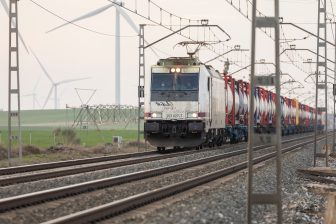
Network Rail explains Trans Pennine Upgrade and upholds needs of freight
The UK government may have cancelled plans for a dedicated high-speed line across the Pennine Mountain range, but work continues to improve the existing network. The Trans Pennine Upgrade (TRU) project has been criticised as a ‘make do and mend’ alternative to an all-new dedicated route, connecting the west and east coasts of northern England. However, supporters claim it is a step change in connectivity for passengers, freight and the economic recovery of the region.
Do you want to read the full article?
Thank you for visiting RailFreight.com. Become a member of RailFreight Premium and get full access to all our premium content.
Are you already a member?
Having problems logging in? Call +31(0)10 280 1000 or send an email to customerdesk@promedia.nl.





“More reliable” and comparatives, yes, but reliable, simply is the requested and by willingly paying clients, handsomely rewarded…
(Flora of comparatives, when advocating for railways, is misleading, is “new speech”, as existing is far from good.)
Regardless of added resources for “maintenance” (repairing) predictive and “optimal”…, etc., just a minority affords luxury of not caring about eta and JIT, at their ware transports.
A New Old Railway, a safely sustainable, is requested.
It is so easy to be negative & do nothing. A “can do” co-operative mind set needs to realise that all benefits postulated by MPs will never come about until the planners put more steel on the ground as they say they will do between Cleckhuddersfax & Dewsbury – good news for the Market there. The nub of the matter is that three more rail trans-Pennine routes are essential, re-aligned Colne – Skipton being the most northerly. Underground Piccadilly HS2 terminal makes more sense than lateral ones.